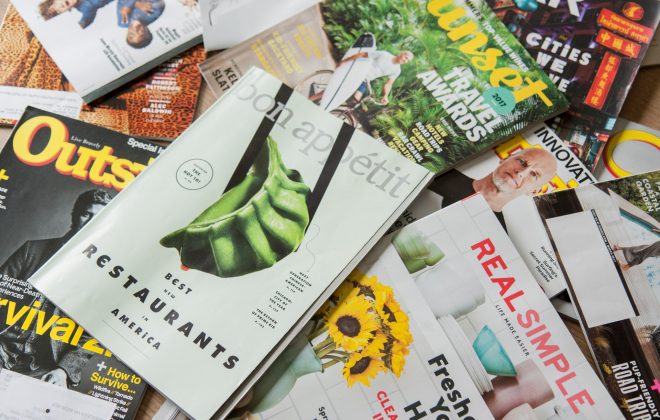Design Fundamentals: The Graphic Designer’s Toolbox
Photo by Ernesto Velazquez from Pexels.
These days, to be a successful graphic designer means cultivating a broad range of skills that can be utilised outside the traditional role of “designer”. Because, when push comes to shove, we need to be able to handle ourselves across a multitude of professional scenarios, in or out of the office.
So let’s take a look at some of the tools that should be on-hand in every graphic designer’s toolbox…
Project Managing
Sometimes projects can require site visits: liaising with site managers, architects, etc. This is mostly the case with large-scale jobs involving large format printing. In such cases, it’s crucial for a designer to have the eye and the experience to visualise how their work will manifest in a certain space.
You need to be able to think in the long term, whilst balancing the physical implications of your design with the limitations of the space.
Also under the umbrella of project managing is the need to liaise with suppliers, offer samples for clients in order to make informed choices, and consult with manufacturers and installation teams.
Artistic directing
Sometimes a graphic designer might be tasked with managing a project for which artwork already exists and is not in a digitised format (e.g a painting). In this case, their role becomes more concerned with steering the art through its production phases.
Especially with large format graphics, this production can eternally be split into two phases: creation and installation. The problem is that the two don’t always cooperate. Which is to say that an artist may not necessarily understand much about specific print/production processes. Equally, printers and installers may not know much about the artistic direction of the project.
This can result, if not managed properly, in miscommunication. Which, in turn, can lead to unsatisfactory final product. A quick example would be a printer cutting out a piece of the design due to space restrictions.
As a graphic designer your job would be to oversee any necessary adjustments to the artwork. This means ensuring that the print restrictions and the piece itself don’t clash with one another.
What’s important here is that the designer has an understanding of both the creative and practical aspects of a project. After all, once the artwork is complete it needs to be rendered into whatever format it will be displayed in. As a bridge between the two processes, the graphic designer needs to make sure that the suppliers of the printed product will produce something that is true to the artist’s vision. Which brings us nicely to the next item…
Service referral
This is referring clients to additional services that are required to complete a project. It falls under the umbrella category of project management, and is essential if you want to provide a concept-to-finish design service.
The real trick here is in the quality of the referrals. One thing, for example, that’s incredibly important is knowing a good printer. If you have access to a reliable, high-quality printing service then you can take a weight off your clients by smoothing out the final stages of a physical design project.
The same can be said for any other design-related service that your clients are likely to need. If you can provide solid referrals then you can save your client time, money, and stress.
Brand consulting
Often the job of a graphic designer is to steer a brand’s entire aesthetic through consultation. For this there may not be much, if any, actual design involved at first. Instead the designer simply pours over all the facets of the brand with a critical eye. After which they engage the client in a dialogue about what works, what doesn’t, and in which ways the overall design needs to change in order to steer the brand in a more positive direction.
This is an indispensable tool for any designer. It demonstrates expertise, experience, and an ability to operate on a broad imaginative scale.
Marketing Management
Sometimes, especially when working with smaller businesses, a designer may be called on to oversee an entire marketing operation.
For whatever the reason, scenarios can crop up where you’ll find yourself guiding an idea from concept to realisation almost single-handedly. In such situations an understanding of (or at least a feel for) marketing management can come in handy.
You may find yourself liaising with copywriters, printers, web developers, and photographers on behalf of your client, all at the same time. So having have the confidence to oversee projects and the vision to keep things in order is extremely valuable for the modern designer.
Over time you might even build up your own team of marketing professionals who you can use to approach clients for a full-service, all-singing-and-dancing, marketing package.
Networking
We’ve talked about networking before. But it’s a vital and handy addition to the graphic designer’s toolbox.
Taken alongside all of the above, it’s easy to see the value of good networking. Often, when managing or overseeing a project, it’s the designer’s job to source printers and installers.
When this is the case, much of the quality of the final project rests in your hands. With any design job there’s a lot riding on the printing process, which can make or break the end product.
Knowing who you’re dealing with, and knowing that they have a sound understanding of their industry, offers peace of mind. If you know that the printer you work with is experienced, and can turn around a high quality job in good time, and knows the limits of certain print formats, then you’re setting out in good stead.
But of course, having access to high quality people means first meeting those people. Which of course means networking. Just as managers are only as good as their employees, designers are only as good as their printers and suppliers.
Beyond design
As with any creative profession, design is often about much more than just design. And as designers, we need to make sure that we can offer a broad range of services in order to best serve our clients.
And speaking of other skills and services, why not take a look at our previous posts on writing killer headlines and utilising professional photographers.




